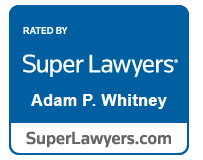GUEST POST BY BRANDON SLOANE
On February 26, 2020, the National Labor Relations Board (NLRB) issued a final rule clarifying the standard for determining joint-employer status under the National Labor Relations Act (NLRA). The NLRB’s ruling is significant for any employer covered under the NLRA (which includes nearly all private-sector employers) because a joint-employer finding carries with it significant rights and obligations that a joint-employer must recognize for its employees.
A joint employer under the NLRA accepts some of the duties and responsibilities that are accorded to an employee’s primary employer. These include: 1) for unionized employees, the joint employer must participate in collective bargaining over the terms and conditions of employment, 2) any picketing directed at a joint employer that would otherwise be secondary (unlawfully picketing someone other than your employer) is considered primary and thus lawful, and 3) each joint employer may be found jointly and severally liable for the other’s unfair labor practices under the NLRA.
The Final Rule, which will go into effect on April 27, 2020, has five major aspects:
-
It specifies that a business is a joint employer of another employer’s employees only if the two employers “share or codetermine the employees’ essential terms and conditions of employment”;
-
It clarifies that the list of essential terms and conditions are: wages, benefits, hours of work, hiring, discharge, discipline, supervision, and direction;
-
It provides that a joint employer is one that possesses and exercises such “substantial direct and immediate control over one or more essential terms and conditions of employment of another employer’s employees” as would warrant a finding that the business meaningfully affects matters relating to employment;
-
It defines “substantial direct and immediate control” as control “that has a regular or continuous consequential effect on an essential term or condition of employment”, and control that is not exercised on “a sporadic, isolated, or de minimis basis”;
-
It specifies that evidence of indirect or contractually reserved (but never exercised) control over essential terms of condition, and of control over mandatory subjects of bargaining under the NLRA other than essential terms and conditions, are indicative of joint-employer status, but only to the extent that it supplements evidence of direct and immediate control.
The Final Rule represents an attempt by the NLRB to clarify unsettled law as to which employers qualify as joint employers under the NLRA. In 2015, the NLRB issued Browning-Ferris Industries (BFI), 362 NLRB No. 186, which held that a company could be deemed a joint employer if it had merely indirect, limited and routine, or contractually reserved but never exercised control over a business’s employees. The BFI ruling helped to enforce joint-employer status for a larger number of businesses under the NLRA. The ruling particularly impacted a business owner’s duties to subcontractors or franchisee employees. The level of control that a business owner or franchisor had over these types of employees is usually more attenuated than what general contractors and franchisee owners would have. But the BFI ruling held they could still be joint employers with indirect or potential control.
The Final Rule, with its necessary requirement for substantial direct and immediate control, will in all likelihood eliminate the obligations that these business owners owed to franchisees and subcontractors under the logic of BFI. The ruling represents a win for employers, who will now have a better sense of exactly which workers they owe NLRA rights and obligations to.
Over 14.5 million Americans belong to labor unions in the United States today, so it should come as a welcome sign for business owners who interact with third party workers such as subcontractors and franchisee employees that only those workers over whom they have substantial direct and immediate control will they be obligated to under the NLRA.
Brandon Sloane is a third-year student at Boston College Law School. He aspires to become a Massachusetts labor & employment attorney after graduation.
Fine print: the above is the work of the author only. The above is not legal advice, but general information. I cannot provide legal advice without a written fee agreement and a full review of your legal matter.
CONNECT WITH ADAM
RELATED PRACTICE AREAS
ADAM’S RECENT POSTS
Critical Do’s and Don’ts for Executives Considering Quitting or Facing Termination Part 2
In Part One of this blog, we discussed the essential do's for executives and professionals navigating the end of an employment relationship. From reviewing your employment documents and consulting an attorney to gathering evidence and negotiating terms of departure,...
Critical Do’s and Don’ts for Executives Considering Quitting or Facing Termination Part 1
Whether you're considering quitting or facing termination, navigating the end of an employment relationship can be a complex and emotionally charged process. As an executive or professional, you have a lot to lose, so it's crucial to approach this transition...
Baby, It’s Cold Outside: Protecting Your Rights in LLC and Close Corporation Freeze-Outs in Massachusetts
Just like the bracing chill of a Massachusetts winter, experiencing a corporate freeze-out can feel cold and harsh. Whether you're part of a Limited Liability Company (LLC), partnership or a close corporation in Massachusetts, a thorough understanding of freeze-out...
A Business Breakup: How to Navigate a Toxic Business Partnership and Safeguard your Financial and Mental Health
Your business partnership started with a shared vision and enthusiasm, much like a marriage. But as many business owners know, partnerships can sour, making your daily operations a nightmare. If you find yourself as a minority owner or majority shareholder in an...
The Ties That Bind (and Unravel): The Perils of Mixing Business with Family
Sometimes bloodlines blur business lines. There's a potent blend of emotion and finance in family businesses. I've been in the trenches, witnessing brothers at odds with brothers, sons challenging fathers, and sibling rivalries taken to the extreme. A wise judge once...
GET IN TOUCH
Law Office of Adam P. Whitney
265 Franklin Street, Suite 1702Boston, MA 02110
ABOUT THE FIRM
PRACTICE AREAS
Business Litigation and Employment Law
Outside General Counsel
Shareholder / LLC / Partnership Disputes
ATTORNEYS
Adam Whitney
RESOURCES
Testimonials
Clients
Success Stories
DISCLAIMER
No attorney-client relationship is established by your use of this site. You must not send or share any confidential information about you or any legal issue without Attorney Whitney's express written permission. The content of this website may be considered advertising for legal services under the laws and rules of professional conduct. The content does not constitute legal advice. The content is for information purposes only. Legal advice cannot be provided unless you hire my firm and we perform a full review of the legal matter and the most current, applicable law. The law in your state may be different than Massachusetts, so the information in the content may be completely irrelevant if you are outside of Massachusetts.



